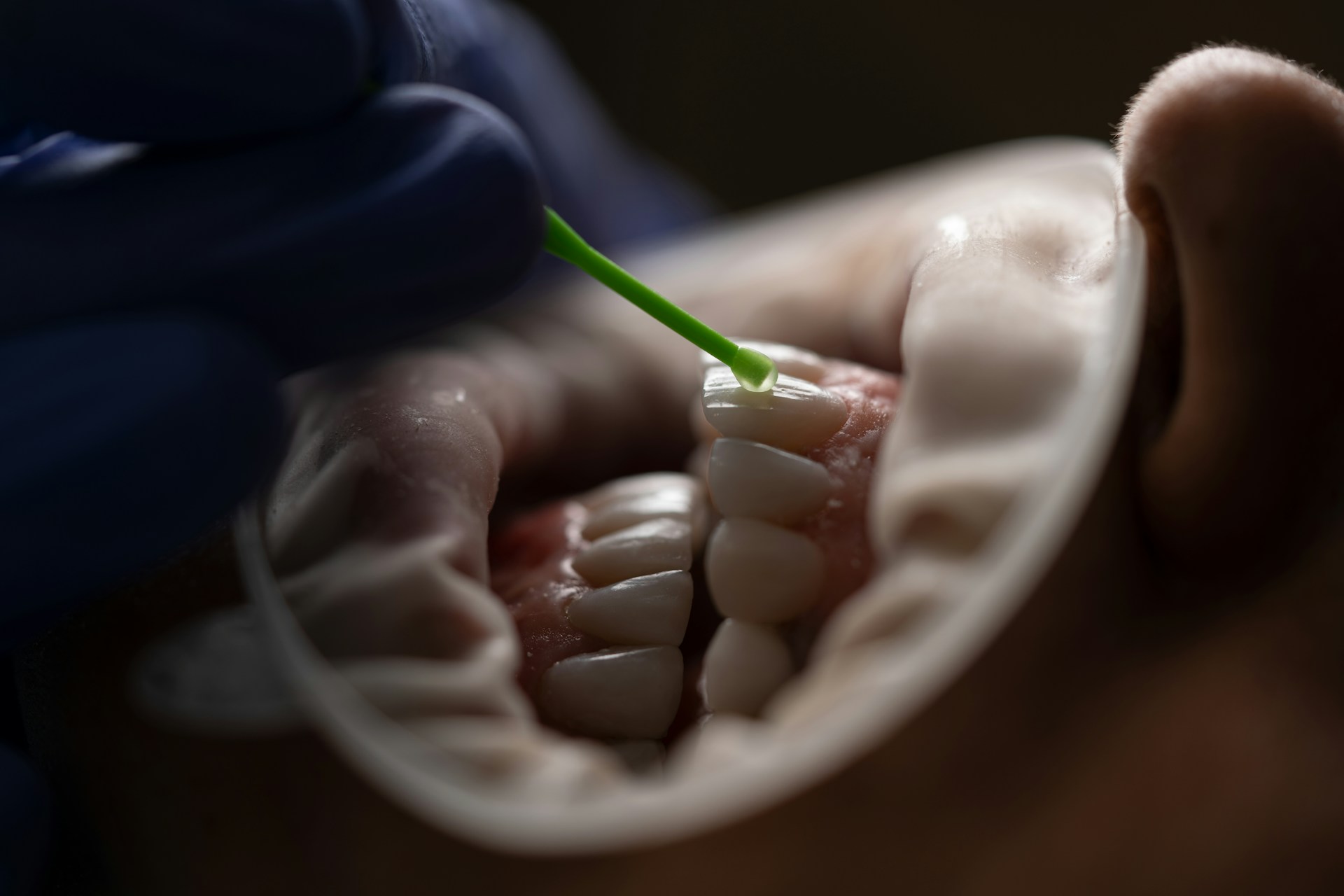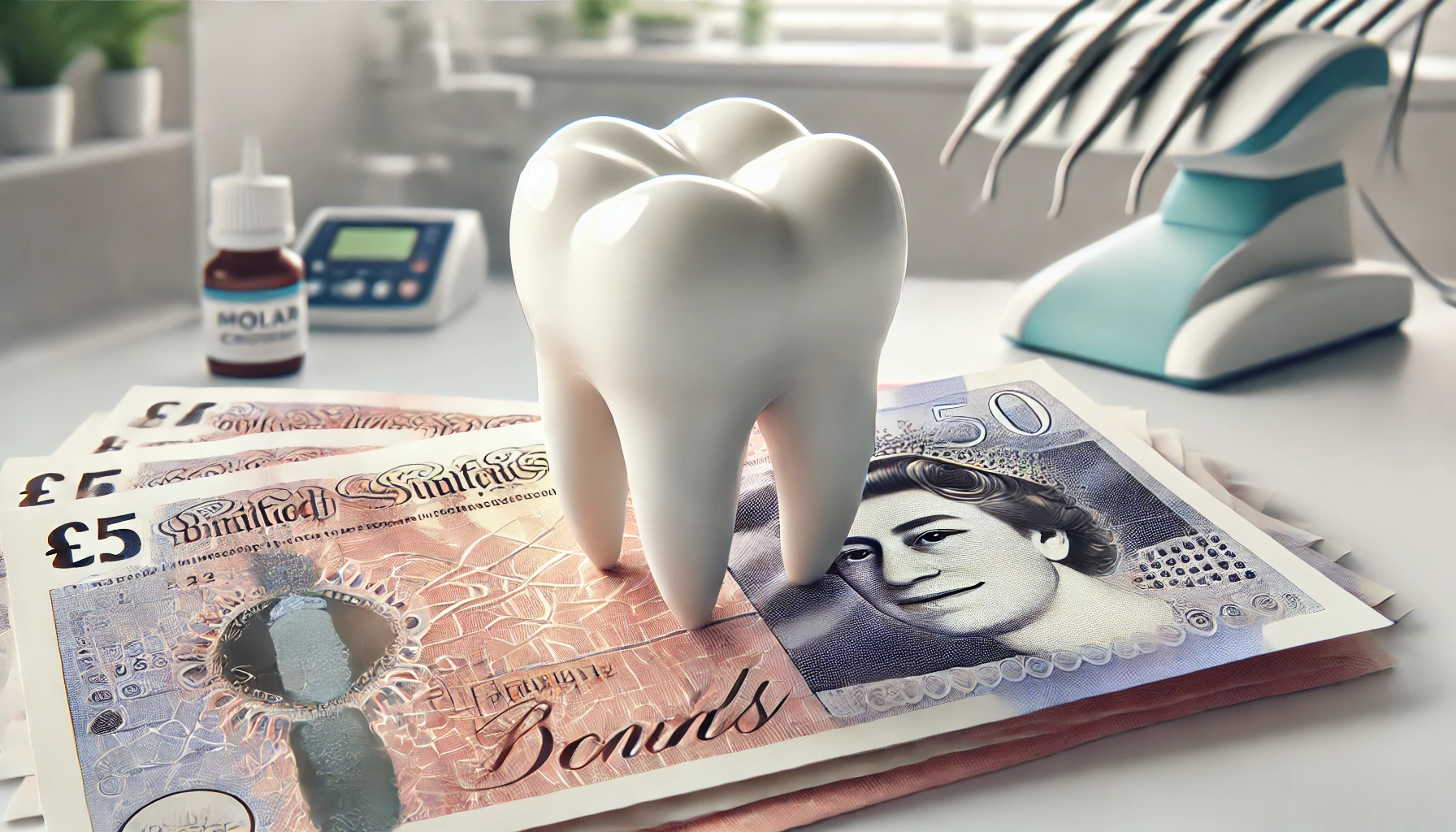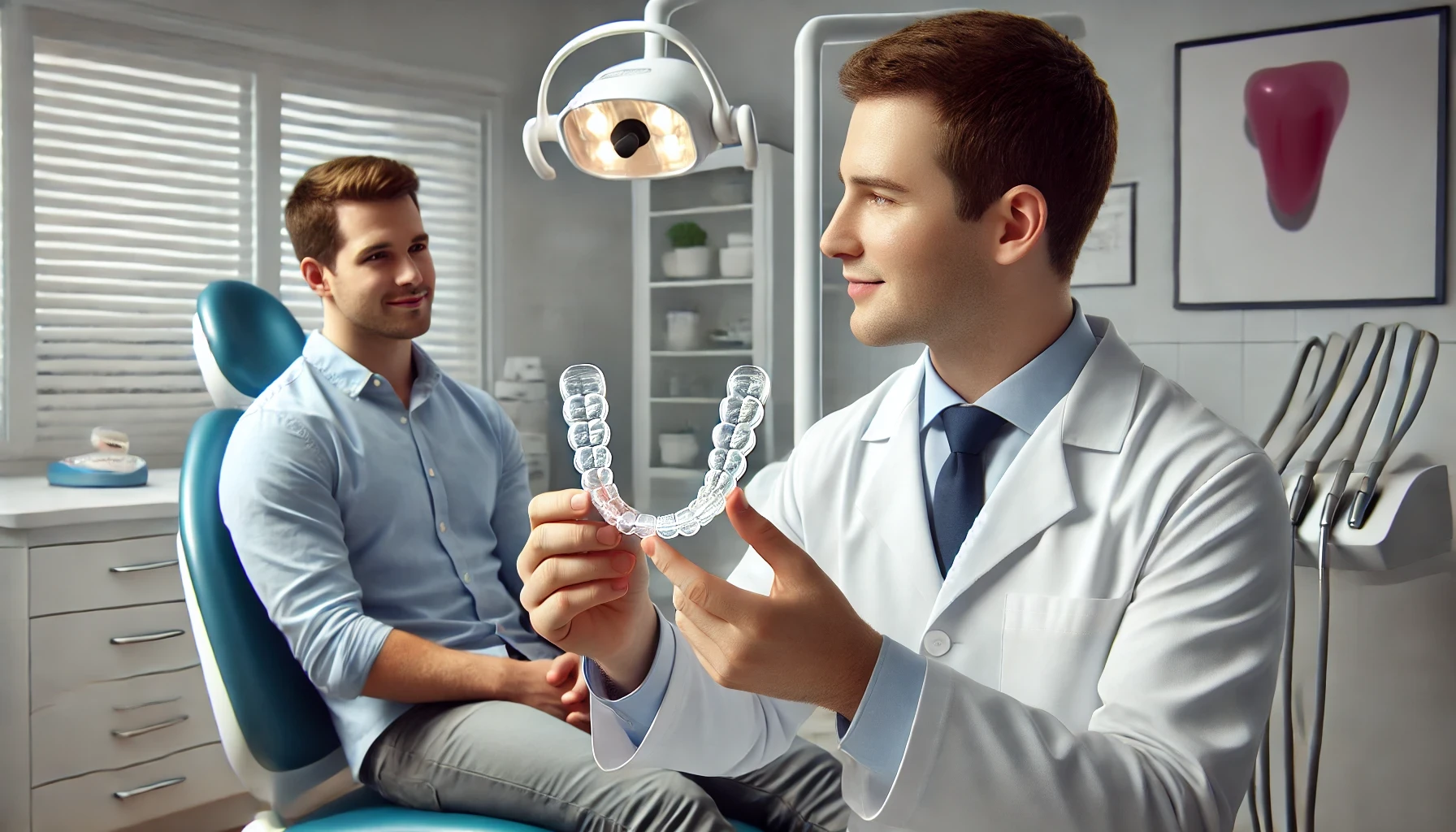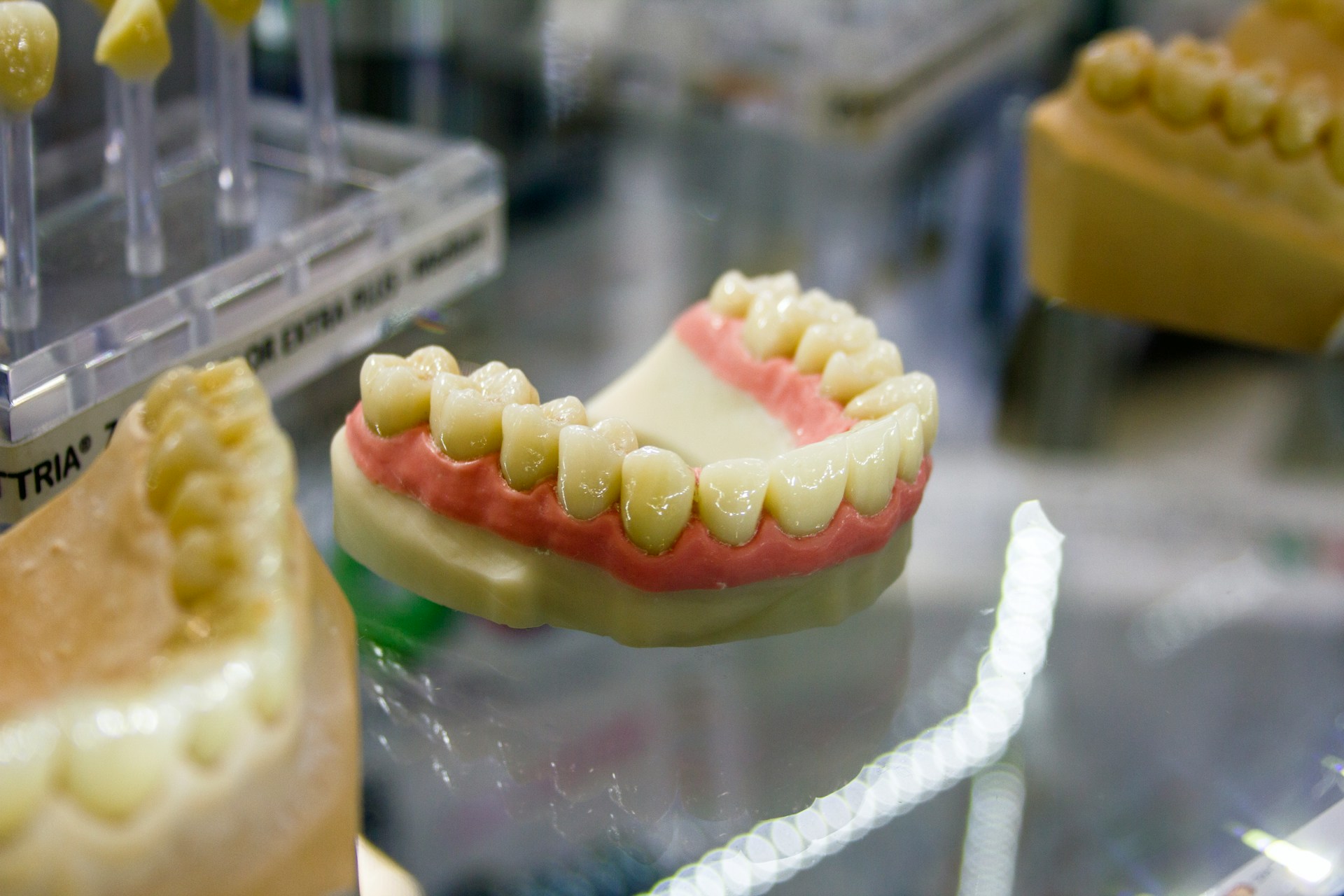If one is contemplating a smile makeover, veneers are likely to be among the top considerations. These thin shells can significantly enhance the appearance of teeth, boosting both aesthetics and confidence. However, it is important to understand what veneers are and the different types that are available. This article delves into the costs of veneers, and the process involved from start to finish. Additionally, it addresses any extra expenses that may arise and evaluates whether the investment in veneers is genuinely worthwhile.
Prepare to be dazzled, not just by your potential new smile, but also by the price tag that comes with it! Dental veneers in the UK are the Rolls Royce of cosmetic dentistry, and like any luxury item, they come with a premium price. Picture this: a single porcelain veneer, handcrafted to perfection, can set you back anywhere from £850 to a jaw-dropping £1,300.
That’s right, the cost of one veneer could rival a weekend getaway to Paris! But before you start counting your pennies, remember that veneers are an investment in your confidence, your first impressions, and arguably, your future. For those looking to transform their entire smile, a full set of 6-8 veneers could cost between £4,500 and £10,000 – that’s the price of a small car, but unlike a vehicle, your smile won’t depreciate the moment you leave the dentist’s office! And here’s a little secret: many clinics offer payment plans that could turn your dream smile into a reality without breaking the bank.
From interest-free options to long-term financing, you could be flashing your new pearly whites for as little as the cost of your daily latte. So, while the initial numbers might make your eyes water, remember: a stunning smile is priceless, and with veneers, you’re not just buying teeth – you’re investing in a lifetime of confident grins!
What Are Veneers?
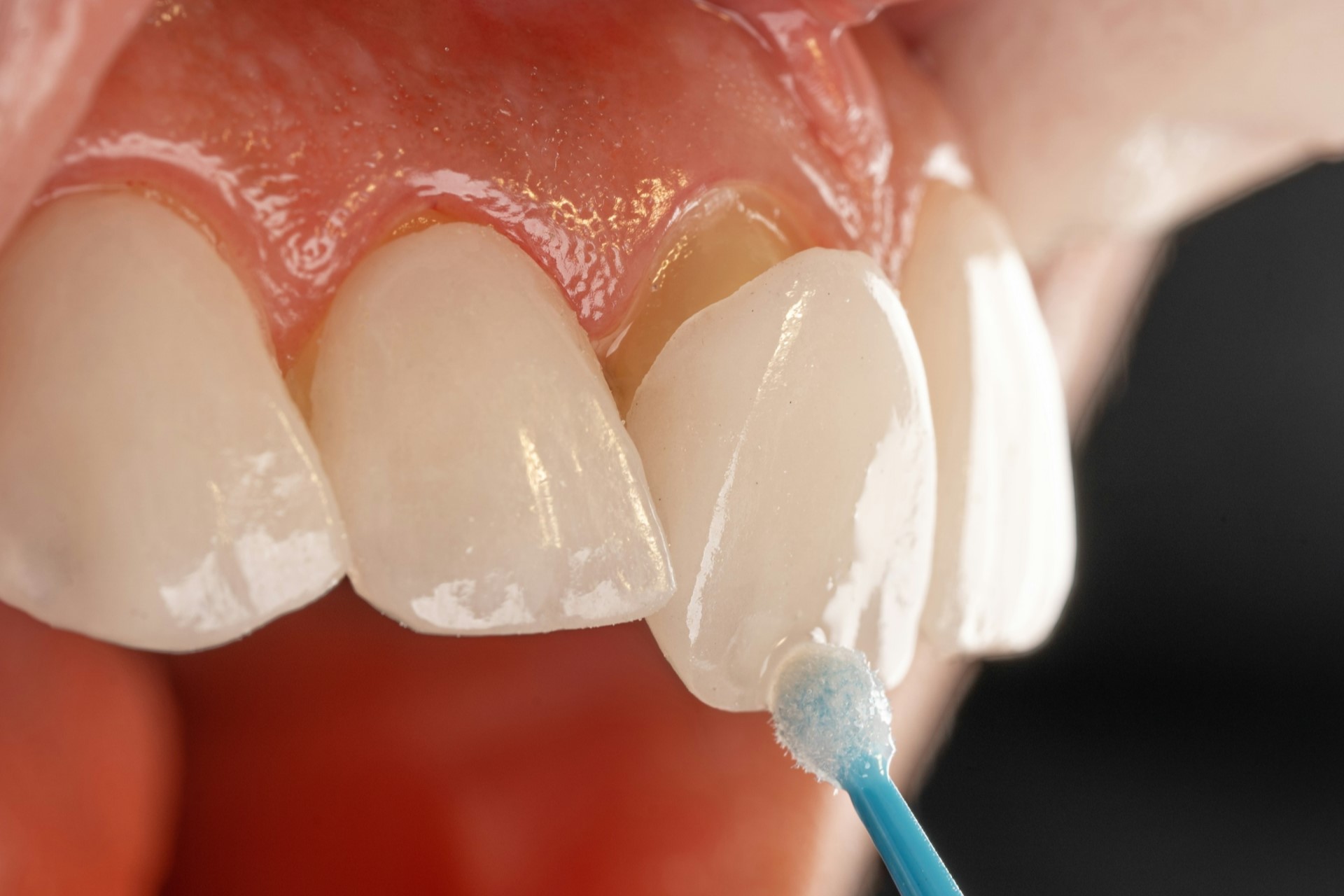
Veneers are ultra-thin shells crafted from porcelain or composite materials, which are bonded to the front surface of teeth. They have become a popular option in cosmetic dentistry for enhancing smiles and addressing various dental imperfections.
This versatile solution not only improves the appearance of teeth but also offers functional benefits, enabling individuals to achieve their desired smile while ensuring they maintain optimal oral health.
What Are The Different Types Of Veneers?
In cosmetic dentistry, there are primarily two types of veneers: porcelain veneers and composite veneers. Each type offers unique benefits and aesthetic outcomes tailored to the needs and preferences of the patient.
Porcelain veneers are highly regarded for their exceptional durability and lifelike appearance, making them a popular choice for those seeking long-lasting solutions to enhance their smile. Their resistance to staining and chipping ensures they maintain their brilliance over time, which is particularly appealing to individuals looking for a radiant smile with minimal maintenance.
Conversely, composite veneers offer a more cost-effective alternative, allowing for quick adjustments and repairs. While they may not match the durability of porcelain, composite veneers can be sculpted and layered to achieve a specific aesthetic. This makes them suitable for minor corrections and for those who prefer a less invasive approach to cosmetic dentistry.
Ultimately, both options fulfil distinct cosmetic goals and accommodate varying budgets, effectively transforming dental aesthetics.
What Are The Benefits Of Veneers?
Veneers present a range of benefits that contribute to their popularity among individuals looking to enhance their smiles. Many patients have reported improved aesthetics, a natural appearance, and increased confidence in their smiles.
These thin layers of porcelain or composite resin are carefully designed to match each person’s desired shade and shape, resulting in a vibrant smile that can truly brighten their entire face.
The transformative effects of cosmetic procedures like veneers often lead to high levels of patient satisfaction, as individuals frequently express a significant boost in their self-esteem and overall happiness.
Veneers effectively address concerns such as discolouration and misalignment while also providing a durable solution that stands the test of time. This highlights the importance of aesthetic enhancement in both personal and professional environments.
How Much Do Veneers Cost?
The cost of veneers can differ considerably depending on several factors, including the type of veneers selected, the skill level of local dentists, and whether dental insurance will cover any part of the expenses.
Therefore, it is important for potential candidates to conduct a thorough cost analysis before making a decision.
What Factors Affect The Cost Of Veneers?
Several cost factors can significantly influence the final price of veneers. These include the type of dental procedure, the materials used, the reputation of the dental clinic, and any potential hidden costs that may arise during treatment.
Understanding these elements is essential for anyone considering this cosmetic dental option. For example, the choice of material can greatly impact both durability and aesthetics, with porcelain typically being more expensive than composite resin.
The experience and expertise of the dental professional also play a crucial role in pricing; clinics that have established a strong reputation usually charge higher fees.
Plus the initial cost, exploring potential financing plans is vital, as these options can make the treatment more accessible while ensuring a clear understanding of the pricing.
By prioritising transparency in pricing and clearly outlining the associated costs, dental clinics can assist patients in making informed decisions about their smile transformation.
What Is The Process Of Getting Veneers?
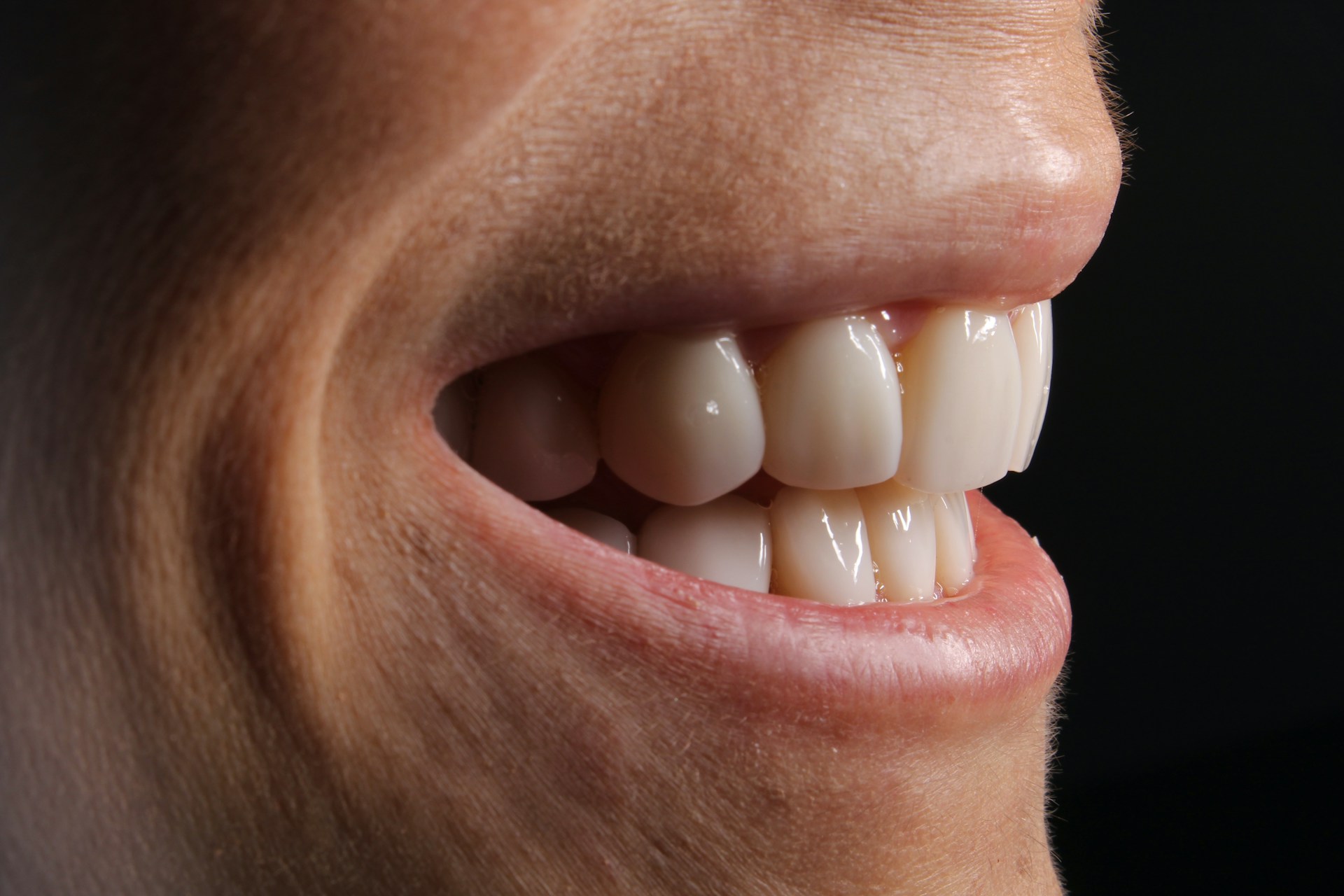
Obtaining veneers entails a sequence of dental procedures. This usually begins with an initial consultation, followed by tooth preparation, taking impressions, and the placement of temporary veneers.
Finally, the permanent veneers are applied. Each step is designed to achieve the best possible aesthetic results.
1. Consultation And Examination
The first step in the veneer process involves a comprehensive consultation and examination in which dental professionals assess the patient’s oral health, discuss their aesthetic goals, and explore treatment options tailored to their individual needs.
During this initial appointment, patients can expect to have an in-depth conversation about their dental history and any concerns they might have, ensuring that every aspect of their oral health is carefully considered.
It is important to understand that demographic factors, such as age and lifestyle, can significantly impact the type of veneers recommended.
For instance, younger patients may lean towards more conservative options that can accommodate changes in their smiles over time, while older individuals might find that more durable materials are better suited to their needs.
Receiving expert guidance at this stage is vital for setting realistic expectations and achieving the desired results in both appearance and functionality.
2. Preparation Of Teeth
Preparing the teeth for veneers involves reshaping the enamel to ensure a proper fit, a crucial step in the dental procedures aimed at achieving optimal results. This meticulous preparation is essential, as it creates a surface that allows the veneers to bond securely, enhancing both their durability and aesthetic appeal.
During this stage, dentists typically use high-precision tools to remove just the right amount of enamel. This ensures that the teeth maintain their natural structure while accommodating the thickness of the veneers.
Once the reshaping is complete, impressions are taken to craft custom veneers that fit seamlessly. This careful approach not only optimises comfort and function but also contributes to the overall longevity of the restoration, allowing patients to enjoy a radiant smile for many years to come.
3. Taking Impressions
Taking precise impressions of the prepared teeth is a critical step in the veneer process, as it ensures that the custom veneers fit perfectly and align with the aesthetic goals of the patient. This step is essential not only for guaranteeing that the final product adheres seamlessly to the natural contours of the teeth but also for contributing to the overall success of the treatment.
Recent advancements in impression technology, such as digital scanning, allow practitioners to capture high-resolution images of the dental arch with remarkable accuracy. This level of precision facilitates the creation of individualised designs that cater to unique facial features and personal preferences, ultimately enhancing the overall smile.
By embracing these modern techniques, dental professionals can craft veneers that not only fulfill functional requirements but also provide aesthetically pleasing results that reflect the desires of the patient.
4. Temporary Veneers
Once the impressions are taken, temporary veneers are placed to protect the teeth while the permanent veneers are being crafted. This provides patients with an interim solution that maintains aesthetic results.
These temporary veneers are essential for patient care as they help prevent sensitivity and protect the underlying tooth structure during the critical healing and adjustment period. By offering a preview of the potential final outcome, they assist in managing the patient’s expectations and alleviating anxiety related to the waiting period.
This approach not only enhances the psychological comfort of individuals but also allows them to acclimatise to the new appearance of their teeth before the permanent solutions are revealed.
In essence, temporary veneers serve not merely as placeholders but as a vital component of the overall restorative process.
5. Placement Of Permanent Veneers
The final step in the veneer process involves placing the permanent veneers by bonding them to the teeth, which ensures both durability and a lasting aesthetic enhancement.
This crucial stage not only showcases the technical skills of the dental professional but also underscores the importance of precise alignment and positioning for an ideal fit.
Achieving optimal treatment outcomes during this procedure can significantly enhance the patient’s smile and overall dental health. Patients can expect not only an immediate visual transformation but also long-term benefits, such as improved tooth strength and greater resistance to staining.
Thus, meticulous attention to detail during the placement process is essential, as it lays the groundwork for the veneers’ enduring beauty and functionality.
Are There Any Additional Costs Associated With Veneers?
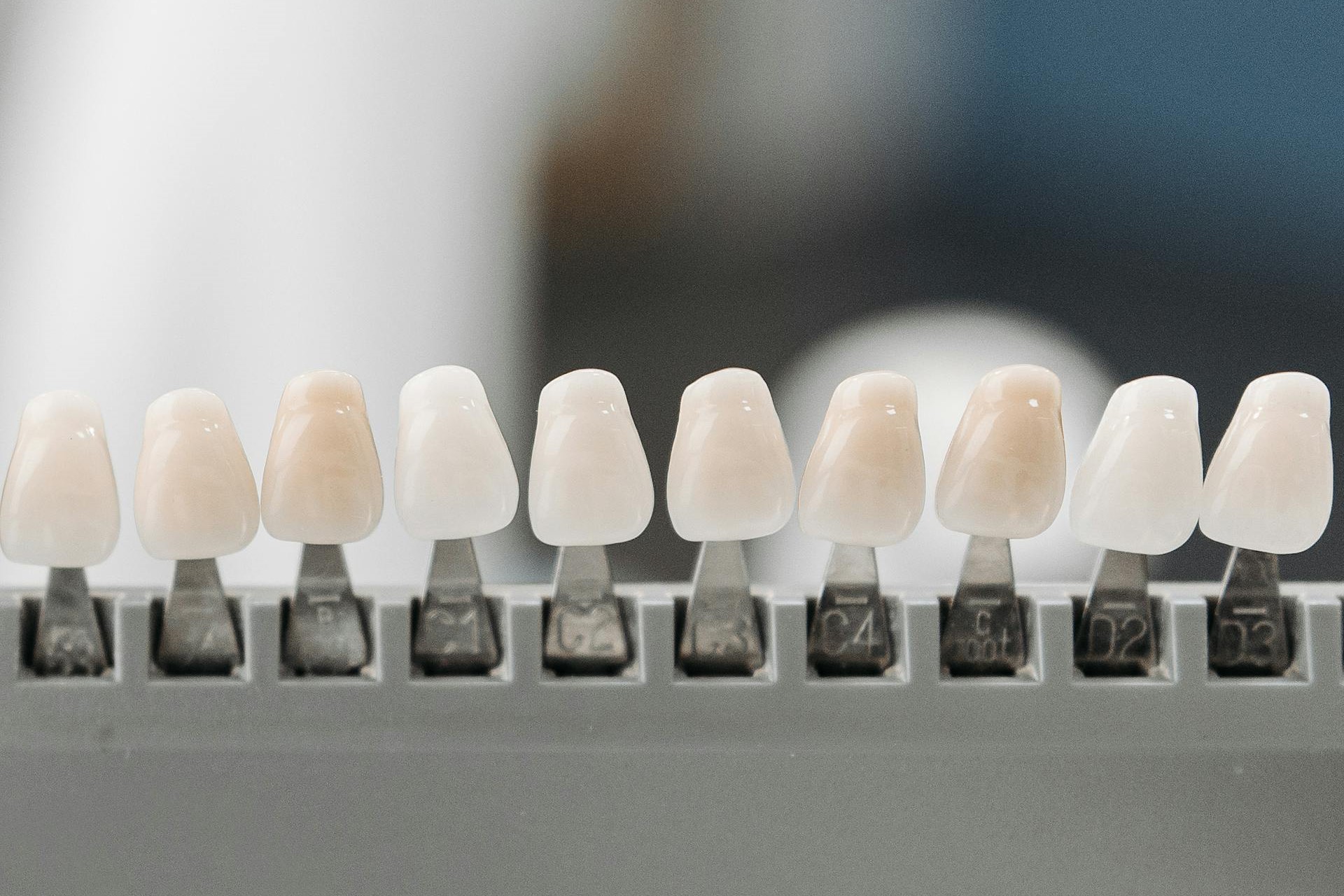
Plus the base cost of veneers, it is important for patients to consider potential additional expenses that may arise. These can include consultation fees, X-rays, and other necessary diagnostic tests, as well as anaesthesia.
Additionally, there may be some hidden costs that could impact the overall budget. Being informed about these possibilities can help ensure a more accurate financial plan.
1. Consultation Fees
Consultation fees are an important factor for patients considering veneers, as these costs can fluctuate depending on the dental professional’s expertise and the patient’s demographics.
It is vital to recognise that different clinics may have varying rates for initial consultations, which can significantly influence financial planning. Younger patients or those from lower-income backgrounds may encounter more considerable challenges when addressing these expenses.
This variability can affect their overall investment in veneers, as higher consultation fees might discourage individuals from pursuing necessary treatments. Being aware of potential payment plans or financing options can assist patients from diverse backgrounds in managing these costs effectively.
This knowledge ultimately paves the way for well-considered choices on their journey to enhancing their smiles.
2. X-Rays And Other Tests
X-rays and other diagnostic tests are typically required prior to the veneer procedure, which can add to the overall costs. It is important for patients to factor in these potential hidden costs when planning their treatment budget.
These imaging techniques play a vital role in identifying any underlying dental issues, such as decay or misalignment, that may need to be addressed before veneers can be applied effectively. Without this critical information, dental professionals might overlook complications that could jeopardise the longevity of the veneers or the health of the teeth underneath.
Diagnostic tests facilitate a more informed discussion about treatment options, ensuring that patients receive personalised care tailored to their unique oral health needs. Recognising that these necessary steps may lead to increased expenses can enable patients to make better financial decisions and avoid any unexpected costs along the way.
3. Anesthesia
Depending on the complexity of the veneer procedure, anaesthesia may be necessary, which adds an additional cost that patients should consider as part of their overall investment in veneers.
This important step not only improves comfort during the treatment but also helps alleviate anxiety, making the experience more manageable for those who may be apprehensive about dental procedures.
By ensuring that patients are adequately numbed, the veneer process can proceed without interruptions, allowing the dental professional to concentrate on delivering optimal results.
It is essential for patients to recognise that this enhanced level of care does come with added costs, which can vary depending on the type of anaesthesia utilised.
Investing in this comfort is crucial, as the benefits significantly outweigh the expenses, ultimately leading to a more positive overall experience.
What Are The Long-Term Costs Of Veneers?
It is important to understand the long-term costs associated with veneers, which include both maintenance and potential replacement expenses.
These factors can have a significant impact on the overall investment and the longevity of veneers in improving dental aesthetics.
1. Maintenance Costs
Maintaining veneers requires regular dental check-ups and diligent oral hygiene practices, both of which contribute to the overall maintenance costs that individuals should consider over the lifespan of their veneers.
These costs are essential, as they play a significant role in ensuring the long-term durability and aesthetic appeal of the veneers. Neglecting oral hygiene can result in plaque build-up and potential decay, which can compromise not just the veneers but also the health of the underlying teeth.
By scheduling regular professional cleanings and consultations, individuals can keep an eye on the condition of their veneers and catch any issues early. Additionally, investing in daily habits such as brushing, flossing, and using mouthwash can significantly extend the lifespan of the veneers.
By prioritising these practices, patients can enjoy a beautiful smile for many years while effectively managing maintenance expenses.
2. Replacement Costs
Replacement costs play a vital role in the consideration of veneers, as they may become necessary after a certain period due to wear and tear. This aspect significantly impacts the overall cost analysis and investment in dental aesthetics.
These cosmetic enhancements typically last anywhere from 5 to 15 years, depending on various factors, making their durability extremely important. Over time, exposure to staining agents and the natural forces of chewing can lead to the degradation of the material, which may require replacements.
It is crucial not to underestimate the potential need for replacement, as this can greatly influence the long-term financial commitment associated with aesthetic improvement. Patients considering this dental procedure should carefully weigh the initial costs against the likelihood of future investments, ensuring they can achieve their desired outcomes while keeping their budget in check.
3. Potential Risks And Complications
When considering veneers, it is important to recognise the potential risks and complications that may arise, as these can influence treatment outcomes and overall patient satisfaction.
Individuals should maintain realistic expectations regarding the durability and maintenance of these cosmetic enhancements. Concerns such as tooth sensitivity, the possibility of discolouration over time, and the risk of damage to the underlying tooth structure can occur—issues that may not be fully appreciated before the procedure.
Furthermore, improper placement of veneers can result in uneven bite alignment or aesthetic dissatisfaction, which can ultimately affect how a person feels about their smile.
By understanding these risk factors, individuals can make informed decisions that contribute to a more satisfactory outcome following the treatment.
Is The Investment In Veneers Worth It?

Determining whether investing in veneers is worthwhile involves considering several factors, including the associated costs and the long-term benefits they offer in achieving aesthetic goals and enhancing patient satisfaction.
From the initial consultation to the final placement, patients should assess not only the financial implications but also the time and commitment required for this transformative process. The journey typically entails multiple visits to ensure that the fit and finish are impeccable.
Therefore, it is crucial for individuals to reflect on how veneers can significantly enhance their smile, boost their confidence, and create a positive impact on their daily lives.
When evaluating the advantages of improved aesthetics against the complexities and costs involved, many individuals find that the lasting benefits of veneers far exceed the initial investment. This recognition often leads to satisfied patients who value their decision for years to come.
Frequently Asked Questions
What are veneers and why are they considered an investment?
Veneers are thin porcelain shells that are placed over the front surface of your teeth to improve their appearance. They are considered an investment because they can greatly enhance the appearance of your smile and boost your confidence and self-esteem.
What is the average cost of veneers?
The cost of veneers can vary depending on several factors such as the type of material used, the number of veneers needed, and the location of the dental practice. On average, the cost can range from $500 to $2,500 per veneer.
Do dental insurance plans cover the cost of veneers?
Most dental insurance plans do not cover the cost of veneers as they are considered a cosmetic procedure. However, it is always best to check with your insurance provider to see if they offer any coverage or discounts for veneers.
Are there any additional costs associated with getting veneers?
Plus the cost of the veneers themselves, there may be additional costs for consultations, x-rays, and other necessary dental procedures such as cleaning and preparing your teeth for the veneers. It is important to discuss these costs with your dentist beforehand.
What are the long-term costs of veneers?
Veneers typically last for 10-15 years with proper care, but may need to be replaced if they become damaged or worn over time. This means there may be additional costs for replacement veneers in the future.
Are there any financing options available for veneers?
Many dental practices offer financing options such as payment plans or dental credit cards to help patients cover the cost of veneers. Be sure to discuss these options with your dentist to find the best plan for your budget.
